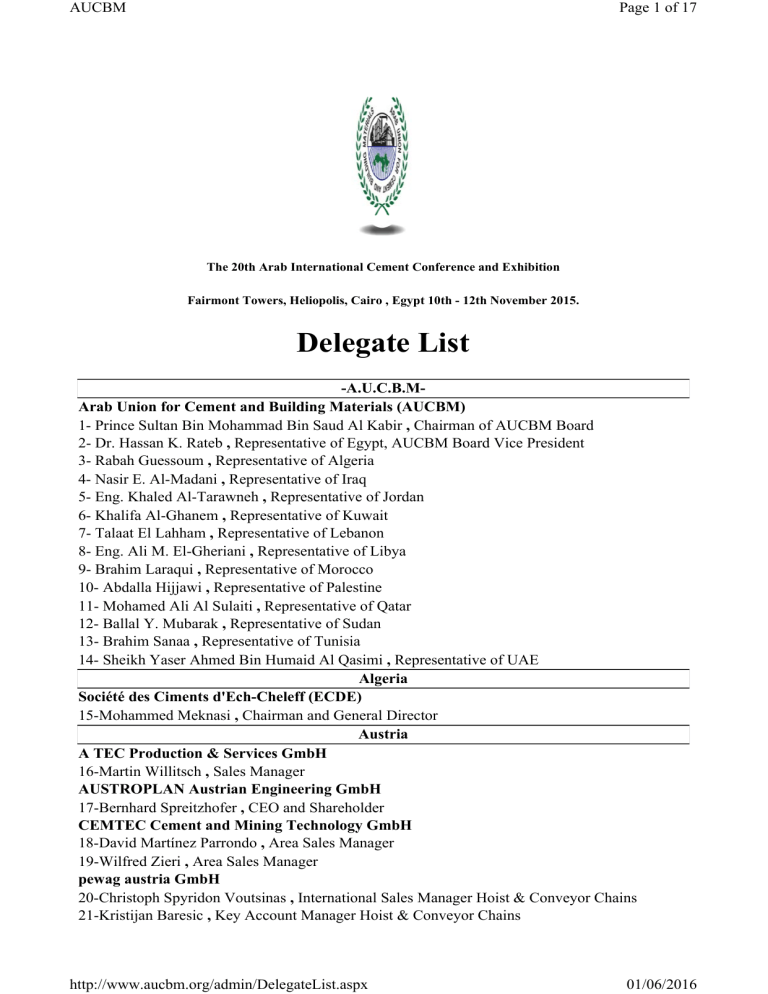Table Of Content

Determining the appropriate approach for a given project requires careful consideration of various factors, including project complexity, timeline, and team expertise. Delegated design may be suitable for projects where streamlined coordination and expedited delivery are paramount, while design assist may be preferred for projects requiring specialized expertise and proactive problem-solving. Ultimately, the decision between delegated design and design assist should be based on the unique needs and priorities of each project, with a focus on optimizing collaboration and ensuring project success. Limit the scope of design duties to design services "typically performed by trade contractors" or list the design duties specifically.
Delegate Meeting to Discuss New T-Shirt Design - MUNDO DEPORTIVO
Delegate Meeting to Discuss New T-Shirt Design.
Posted: Tue, 19 Mar 2024 07:00:00 GMT [source]
The Professional Services Perspective: Delegated Design and Engineering

This option is to be noted “In the structural design drawings or specifications, the connection shall be designated to be designed by a licensed professional engineer working for the fabricator”. The COSP establishes the information needed by the SSE and emphasizes needs for conferences, pre-submittals and proper review and approval by the SEOR. The CASE Guidelines Committee has recently published a white paper on this facet of delegated design in A Review and Commentary of the American Institute of Steel Construction 2010 Code of Standard Practice for Steel Buildings and Bridges. Incorporated in this new document are examples of Pre- Bid and Pre-Construction Conferences agendas. Presented later in this blog post are recommendations for design professionals who comment on delegated design submittals beyond the limited review required by the General Conditions. For larger projects (typically falling under the Ontario Building Code Part 3), although shop drawings showing specialty engineering items are important components of the construction documentation, these are rarely requested in advance by the building department.

Acoustical Requirements for Ceilings and Floor-Ceiling Assemblies
In any case the submittal of complete, engineered, and sealed shop drawings is required. When architects, subcontractors, delegated design professionals, and other stakeholders work together, this process can be quite fruitful and productive. We all need to do a better job, together, of defining the project plan, what each entity is accountable for, and to stick to it. The work always seems to get done, but sometimes there’s too much collateral damage left behind. I believe the industry, those of us working together, are mature enough to lead in this regard and to drive to improved results.
WORKING WITH AN ARCHITECT
We provide the best reach for digital and print promotions for the wall and ceiling industry. Require all design documents that must be stamped are also stamped by the Designer of Record for the Project. Please include what you were doing when this page came up and the Cloudflare Ray ID found at the bottom of this page. This publication presents the views, thoughts or opinions of the author and not necessarily those of HKA. Whilst we take every care to ensure the accuracy of this information at the time of publication, the content is not intended to deal with all aspects of the subject referred to, should not be relied upon and does not constitute advice of any kind.
For example, that members are sized, relationship or reliance on other items are identified, and correct code references given, all of which are not contradicted by the design as shown or noted in drawings. The choice between these methods depends on project goals, complexity, and the level of collaboration desired. In some cases, a hybrid approach may be used, blending the benefits of both methods to achieve an optimal balance between design innovation, cost control, and project efficiency. Ultimately, successful implementation of either approach relies on effective communication, collaboration, and alignment of project stakeholders’ interests.
Primary and Secondary Structural Elements
For architects, the Spearin Doctrine serves as a shield against unwarranted liability stemming from design errors or deficiencies in project plans and specifications. By establishing the owner’s implied warranty of the adequacy of project plans, the doctrine helps architects focus on their core responsibilities of design and coordination without undue fear of legal repercussions for issues beyond their control. As an example of possible pitfalls, roof systems like steel joists, light gage trusses and wood trusses may require special loading as necessary for snow drift, mechanical units, solar panels, roof drain piping, seismic bracing, and sprinkler piping. The snow drift and roof drain piping loading are definable and should be shown on the contract documents. On the other hand, mechanical units loading and size may not be known until a mechanical subcontractor has been selected and requires the SSE to coordinate with the general contractor.
Rather, it is limited to the topic of delegated design submittals, especially their review and processing by the project’s architect, engineer, or geologist (“design professional”) who designed the overall project. In this case, while the construction documents did clearly call for engineering in the pertinent specification sections, what may not have been clear is the requirement for engineering of a complete assembly. Ultimately the contractor hired a third engineer who gathered the pertinent shop drawings and engineering information, assessed it, confirmed the complete assembly and provided a report with an engineer’s seal. The contractor is required to have all the design services provided by an appropriately licensed design professional who signs and seals all drawings, calculations, specifications, certification, shop drawings, and other submittals prepared by that professional.
Tampa’s sunny construction market has builders feeling good
First, success can be best measured by the clarity provided from all parties in communicating design expectations early and often. And, engaging the right experts who can help to bridge the gap between design intent and constructability has proven to be an invaluable practice. These are just some of the potential challenges that can plague the practice of delegated design and prompts consideration of a potentially more effective alternative. If technologies and tools defined the quality of work products, then we would be seeing increasing clarity as a trend.
Structural Sheathing
As a standard practice, the design-assist professional’s services should logically extend into the construction phase to verify the detailing is implemented and to address any unforeseen conditions that inevitably arise during construction. The days when the Structural Engineer of Record (SEOR) designed all aspects of a project in a straightforward design-bid-build environment are becoming few and far between. Today, with the pressures on construction cost, design fees, and design and construction schedules, SEORs are looking to do more for less fee and in less time, while also delivering superior service. In Design Assist, the contractors, construction managers, trades, and suppliers suggest modifications to design elements while the design is still being developed—it is not a delegation of design responsibility. Contractors rely on their own expertise to provide Design Assist services, which is in contrast with Delegated Design services, where a contractor must employ, or otherwise retain, a design professional to fulfill the design responsibilities delegated to it.
While the construction documents, drawings and specifications are the primary tools, the pre-bid and pre-construction conferences can be useful in clarification and confirmation that the project requirements are understood. The possibility of litigation leads to the question – does the SSE have liability insurance and, if so, how much? Is it sufficient based on the nature of the element and its importance in the strength and integrity of the overall structure? It is important to note that being a licensed Professional Engineer or licensed Structural Engineer does not mean that he or she has the knowledge and experience to perform the design services needed. It is imperative that the SEOR’s contract documents adequately define the SSE’s qualifications and experience requirements. Certain other informational submittals may also be required relative to delegated designs, such as the delegated designer’s qualifications statement.
As a general rule, the performance specifications should not impose extraneous or arbitrary requirements on the contractor or their designer. Pie’s ability to hear critical input from the team and apply our expertise accordingly helps our clients to make informed decisions that benefit the project. Combined with the design intent of the architect and the constructability of the general contractor and sub-contractors, the team can use the design-assist process collaboratively to develop specifications and details that help ensure a high performing building.
In addition, many state and local regulations, Casowitz said, require the entity performing design work to be licensed to do that work. For example, Florida allows contractors to offer design-build services, but a statute requires them to engage an architect to perform the design. For Isgett, the reasons designers pass this task to contractors falls into two primary categories — the design firm’s desire to keep its costs down and its recognition that construction companies are the installation experts.
In contrast, professional design of temporary construction and temporary facilities for the contractor’s construction means and methods is not delegated design. The delegation of the design responsibility is designated by the contract in the construction documents via Division 01 specifications and the pertinent technical specification sections calling for engineered shop drawing submittals, in conjunction with notes in the drawings. Accordingly, responsibility to ensure the designated design engineer is engaged lies with the construction manager, contractor or trade that controls the related work and who directs that work so as to ensure conformity with the contract documents. Usually specific engineering is allocated to the subcontractor/supplier in charge of the specific work in question, but whether this is a completely separate engineer engaged by the contractor directly or by other subcontractors ultimately lies with the construction manager or contractor.

No comments:
Post a Comment